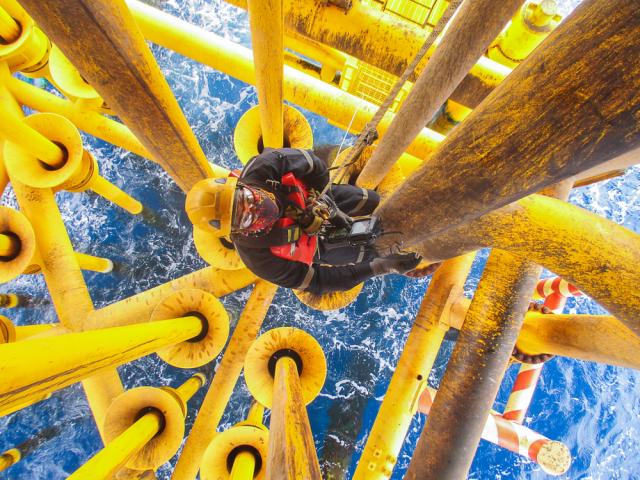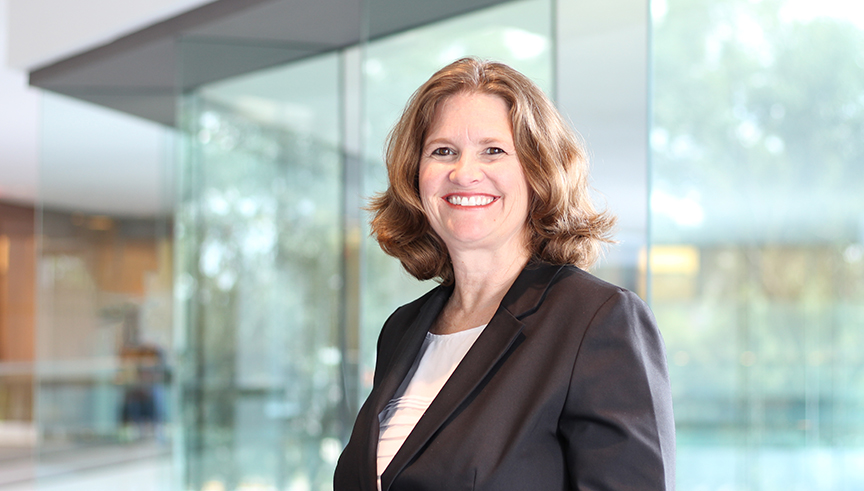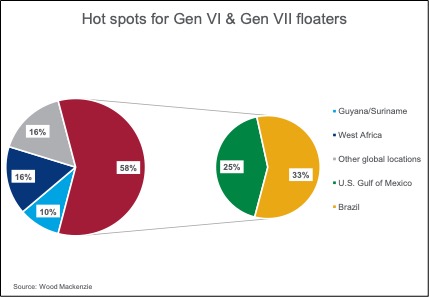
Since fully autonomous rigs aren’t available yet, the safety, wants and needs of a rig's crew are strongly considered when operators are selecting drilling rigs. (Source: Shutterstock)
With rig cross-compatibility, some drilling companies have begun to tailor their rigs to operators in order to set themselves apart and attract contracts.
Rig providers are tailoring innovations, equipment and even crew-worn accessories to set themselves apart as they vie to win contracts from operators. But the offshore market remains especially busy, making the competition for business more challenging.
Leslie Cook, upstream supply chain analyst at Wood Mackenzie, told Hart Energy that “what makes this year unique is availability.”
Rig “utilization is very high. There are very few rigs that are just sitting around waiting for work, which is different from what was going on from 2015 all the way through COVID.”
This increased deployment of the offshore fleet has led to a stressed importance on the vintage of rig equipment when it comes to selecting a rig to operate certain projects. State-of-the-art sixth- and seventh-generation now make up approximately 90% of the operating fleet, according to Cook. That comes as rig providers continue to push the envelope for more bespoke rigs.

“There was this huge new build cycle from 2008 to 2014 where operators needed a new style of rig that had better efficiency and more IoT [Internet of Things] capabilities,” she said. “Everything from adding sensors to monitor equipment, to remote sensing for drilling; there were just a lot of upgrades technology-wise during that time. And now those rigs are the rigs that occupy over 90% of the operating fleet.”
In the Gulf of Mexico, all rigs are newer seventh-generation models, Cook said. These rigs are better equipped to handle the specific regulations that the region requires. Since the Deepwater Horizon Macondo well blowout in 2010, new requirements were put in place for more preventative solutions, including multiple BOPs on all rigs, Cook said. Many regions have different requirements for drillings rigs based on the areas they operate.
When choosing a rig to operate, location plays a key role, especially in places with an incredibly harsh environment like Norway, which has its own set of specialized rigs, says Cook.
“There are several sixth- and seventh-generation rigs, but they're all semi-submersibles because of the harsh environment,” she said. “They're more stable and they've always been highly regulated.”
And while other regions such as the southern coast of Africa and Eastern Canada also have rough waters, some rigs are able to be operated interchangeably due to similar environments shared by different geographies.
“The Gulf, South America and Africa are pretty much interchangeable,” Terry Childs, head of RigLogix at Westwood Global Energy Group, told Hart Energy.
“One rig that can work in the Gulf of Mexico can work off Brazil, West Africa or even Southeast Asia.”

Rigs revamped to lower emissions
Cross-compatibility is just one way some drilling companies are choosing to distinguish themselves to get a leg up on the competition.
Lowering emissions is another avenue providers have begun to use for that purpose.
“One of the technologies that's quite prevalent now is the use of MPD, or managed pressure drilling equipment.” Childs said. “In Europe, you see a lot of operators focusing on lowering emissions. A lot of the drilling contractors are revamping their fleets and adding equipment to cut emissions through various techniques.”
MPD, which uses specialized equipment to control the pressure in a well being drilled, was initially seen as a luxury in the drilling market. Due to its ability to reduce both mud weight and amounts of drilling fluid needed, as well as minimize cost and greenhouse gases through the conservation of resources, MPD has evolved into a borderline necessity for deepwater rigs.
“If you have managed pressure drilling capability on your rig, you are going to be more likely to get a contract in the ultra-deep waters,” Cook said.
From safety to ‘war rooms’
Technological innovations are always attractive to operators when selecting drillings rigs, and MPD isn’t the only newer technology being added to rigs. Predictive maintenance looks to be next in line to make the jump from luxury innovation to a requirement on drilling rigs.
“Improving efficiency and controlling maintenance keeps costs down, so now rigs are beginning to put sensors on all the critical equipment. They've also got these war rooms where they can monitor all the equipment on all the rigs at the same time and they can kind of do more predictive maintenance that keeps rigs up and running more,” Cook said. “So there's a lot of technology around sensors and remote sensing.”

Safety of the crew and safety of the rig are also heavily weighted when selecting a rig. Newer innovations around safety are being unveiled around the industry to help rig providers secure more contracts.
“There's some really cool stuff that's being done around safety,” Cook said. “Crew members might wear things that glow when they walk into a red zone. There’s also more implementation and experimenting with artificial intelligence and the like, as operators would like to see the total unmanned rig that's controlled from the shore.”
Since fully autonomous rigs aren’t available yet, the wants and needs of the crew are also heavily considered when operators choose rigs they’d like to use.
“It's not uncommon for companies to poach people from different rigs, and a lot of that happens just for increased pay, so it’s important there are other things that keep crews happy,” Childs said. “Basic amenities that guys want could vary… Having gym equipment to work out with, having a movie room, having cell service to call your spouse or children or whoever. A lot of those things are important to guys out there.”
Recommended Reading
US Drillers Add Oil, Gas Rigs for First Time in Five Weeks
2024-04-19 - The oil and gas rig count, an early indicator of future output, rose by two to 619 in the week to April 19.
Strike Energy Updates 3D Seismic Acquisition in Perth Basin
2024-04-19 - Strike Energy completed its 3D seismic acquisition of Ocean Hill on schedule and under budget, the company said.
Santos’ Pikka Phase 1 in Alaska to Deliver First Oil by 2026
2024-04-18 - Australia's Santos expects first oil to flow from the 80,000 bbl/d Pikka Phase 1 project in Alaska by 2026, diversifying Santos' portfolio and reducing geographic concentration risk.
Iraq to Seek Bids for Oil, Gas Contracts April 27
2024-04-18 - Iraq will auction 30 new oil and gas projects in two licensing rounds distributed across the country.
Vår Energi Hits Oil with Ringhorne North
2024-04-17 - Vår Energi’s North Sea discovery de-risks drilling prospects in the area and could be tied back to Balder area infrastructure.




